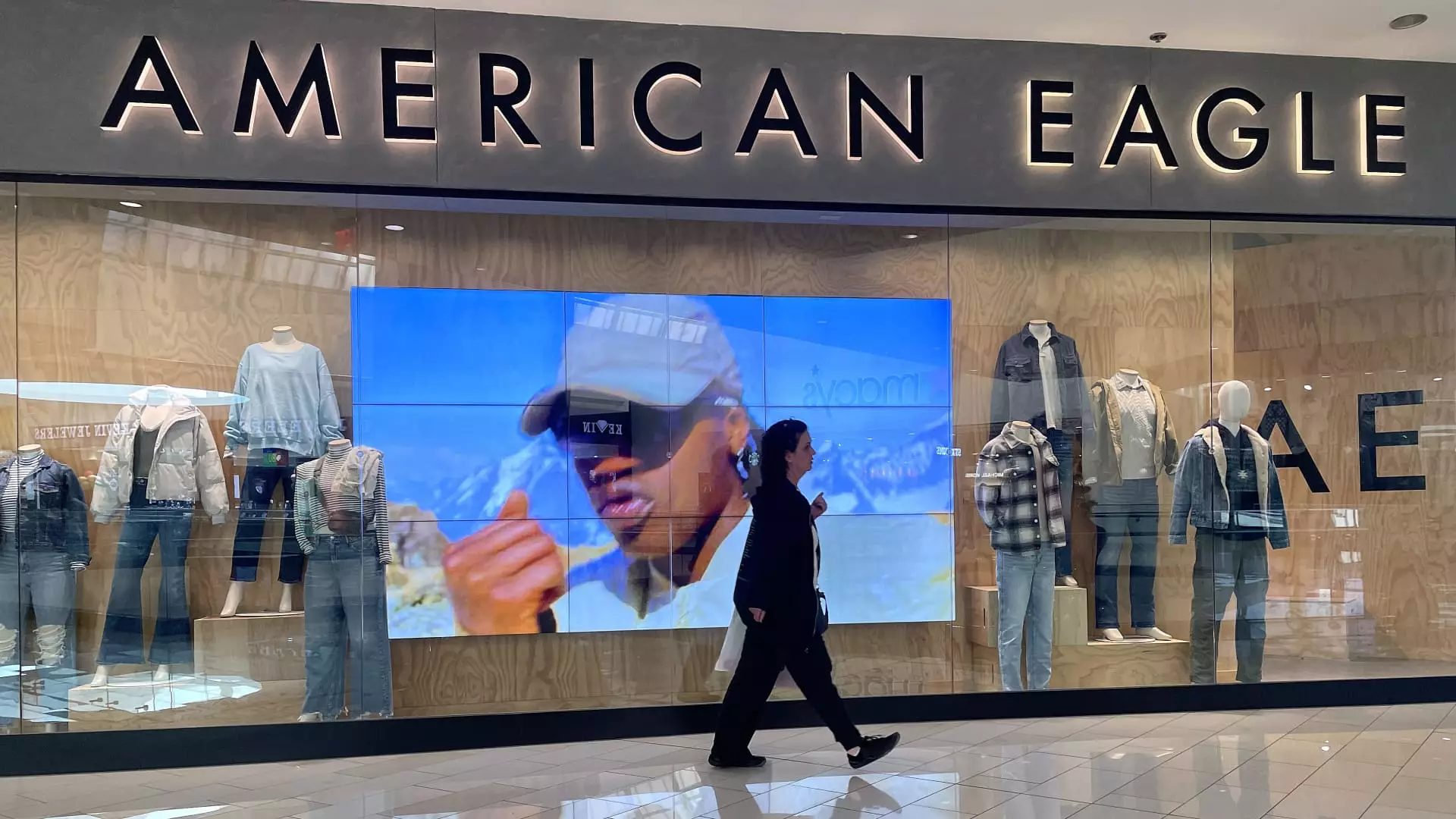The recent performance of American Eagle Outfitters has raised concerns right before the critical holiday shopping season. Following the release of third-quarter earnings, the apparel retailer’s shares plummeted by approximately 13% in after-hours trading—a clear indicator of the market’s apprehension. Much of this reaction is rooted in the company’s lowered holiday guidance and revised full-year projections, demonstrating a challenging environment for retailers as consumer spending trends adapt in response to economic fluctuations.
In assessing American Eagle’s fiscal third-quarter results, there are noticeable discrepancies between the optimistic projections of executives and the reality reflected in the numbers. The company reported earnings per share (EPS) of 48 cents, slightly surpassing analyst expectations of 46 cents. However, the revenue figures tell a more troubling story, revealing a slight decline from last year’s $1.3 billion to $1.29 billion—just shy of the $1.30 billion target projected by analysts. This marks the third consecutive quarter that American Eagle has failed to meet sales expectations, an alarming trend that underscores potential woes within the organization.
Earnings tell only part of the story. American Eagle experienced a net income of $80 million for the three-month period ending November 2, a decline from $96.7 million a year prior, translating to a stark year-over-year drop in profitability per share. This disconcerting shift suggests that while the company has managed to maintain some level of profitability, the competitive landscape and consumer sentiment are taking their toll.
Central to American Eagle’s challenges is the evolving behavior of consumers who are now more selective in their spending. Shoppers appear less willing to engage in regular purchasing, preferring to save their dollars for major shopping periods. CEO Jay Schottenstein acknowledged this reality, highlighting a “strong” back-to-school season, yet he also pointed toward inconsistencies in consumer demand, which are echoed across the broader retail landscape.
This shift has echoed through the earnings calls of several retailers—from Foot Locker to Dollar Tree—each highlighting a similar trend where sales markedly drop off between pivotal shopping events. Consequently, American Eagle anticipates a modest increase of roughly 1% in comparable sales during the holiday quarter, an outlook that falls short of investor expectations, indicating possible struggle through upcoming months.
In light of the current retail climate, American Eagle’s projections for the holiday season and beyond reflect a cautious but perhaps necessary approach. The company now predicts a 3% growth in comparable sales for the year, a downward revision from an earlier goal of 4%. This diminished forecast appears to echo a broader sentiment of uncertainty within the retail sector, particularly when juxtaposed against the backdrop of an unpredictable macroeconomic landscape and the looming 2024 election.
Unlike some of its competitors, which have offered more optimistic projections post-earnings calls, American Eagle continues to embrace a more reserved outlook. Abercrombie & Fitch and Dick’s Sporting Goods previously expressed caution but later adjusted their stances positively, a maneuver that seems to highlight American Eagle’s hesitance to embrace a more buoyant narrative amidst swirling uncertainties.
Despite the mixed messages emanating from the overall company performance, American Eagle does revel in bright spots—most notably, the burgeoning success of its Aerie brand. Third-quarter revenue for this division peaked at an all-time high, with a comparable sales growth of 5%, building upon a robust 12% growth from the previous year. This indicates a potential pathway for American Eagle to cultivate stability even amidst broader market challenges.
As American Eagle heads into the critical holiday shopping season, the company must navigate the turbulence of reduced consumer spending and marketplace uncertainties with strategic planning. By leveraging the strengths of its Aerie brand while addressing the wealth of challenges ahead, American Eagle could set a trajectory that not only enhances consumer engagement but also stabilizes its financial footing. However, without a shift in the overall consumer mindset and broader economic recovery, the retail landscape may continue to pose significant hurdles.

